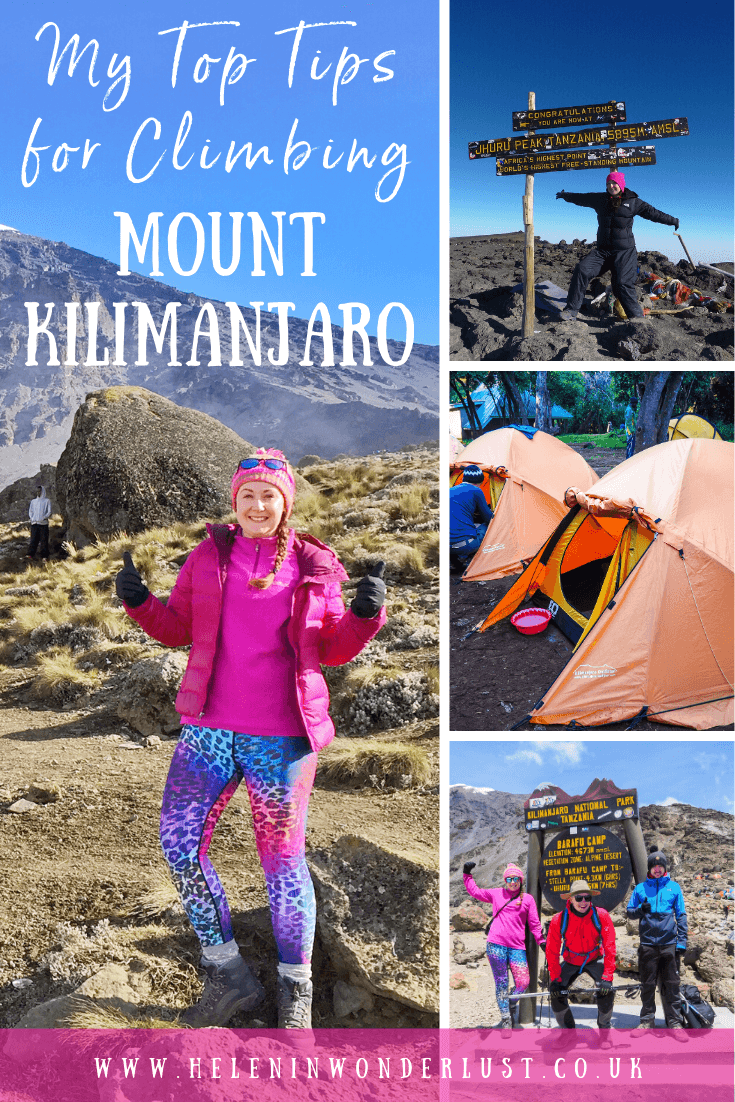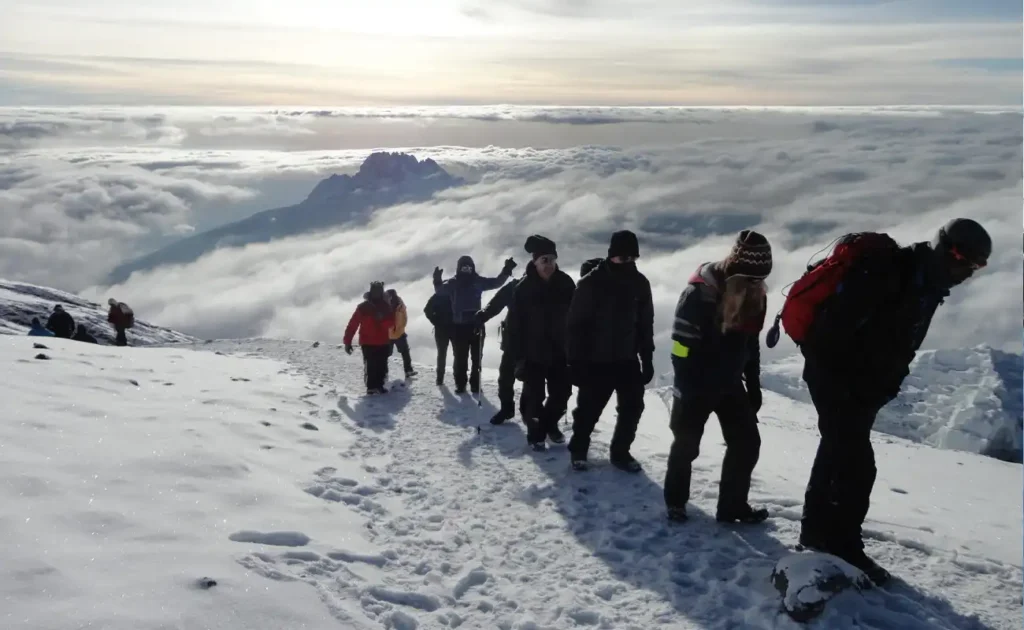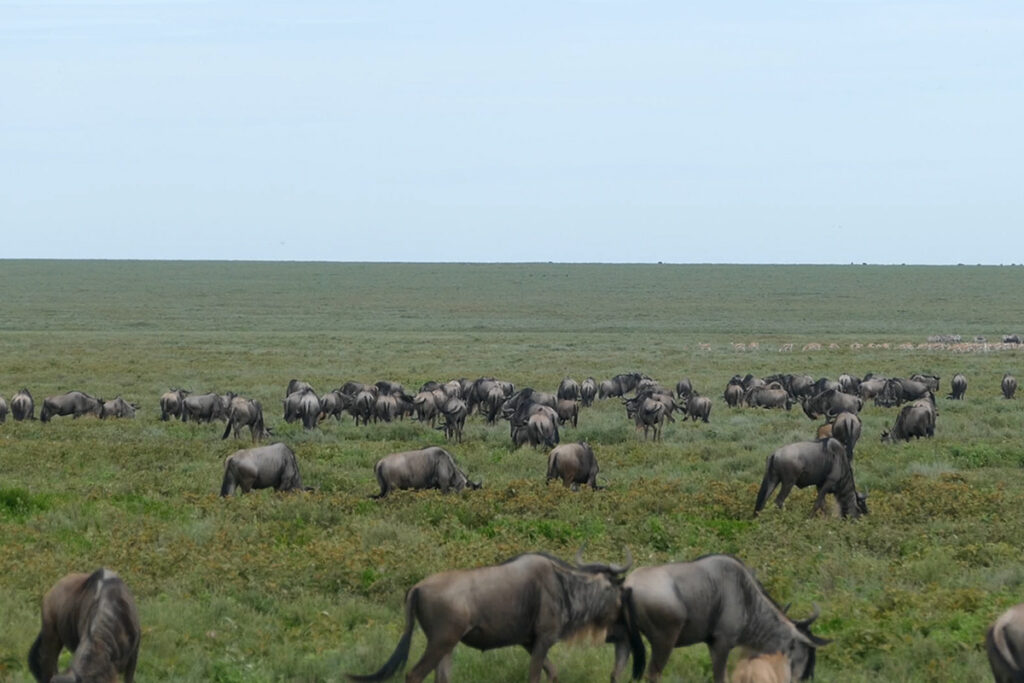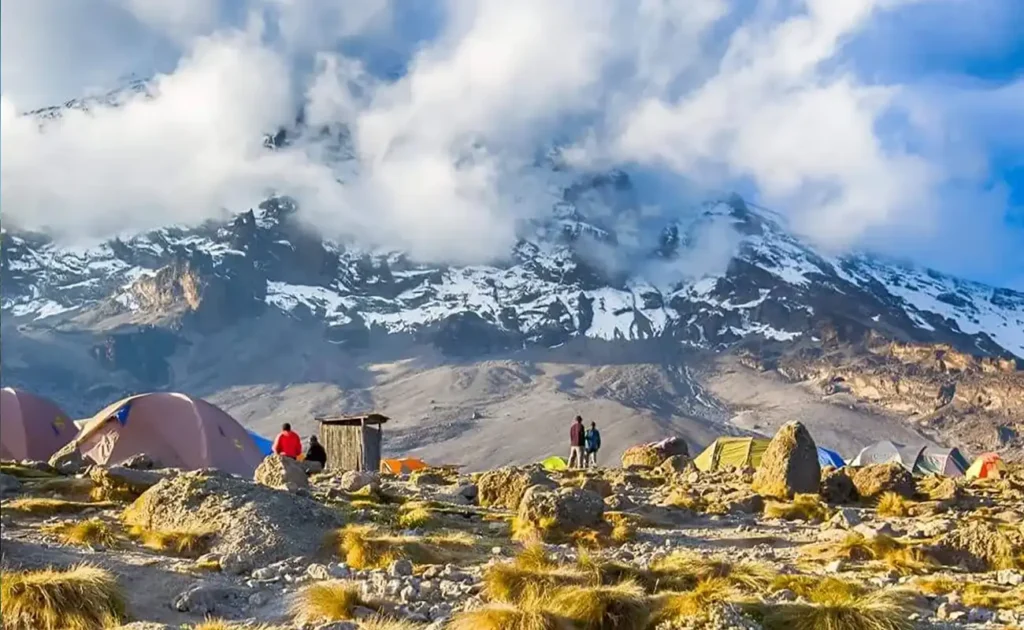Climbing Kilimanjaro isn’t just about scaling the heights; it’s about the journey and preparation. A staggering 50% of aspirants fail to reach the summit due to inadequate training and acclimatization. Understanding this makes a strategic training plan more crucial than ever.
The most significant aspect of training for Kilimanjaro is simulating the altitude and terrain you’ll encounter. For instance, hiking at a steady pace, increasing elevation gradually, helps your body adapt to lower oxygen levels. In this respect, cardio workouts, strength training, and long hikes carrying a weighted backpack can make a substantial difference in your readiness.
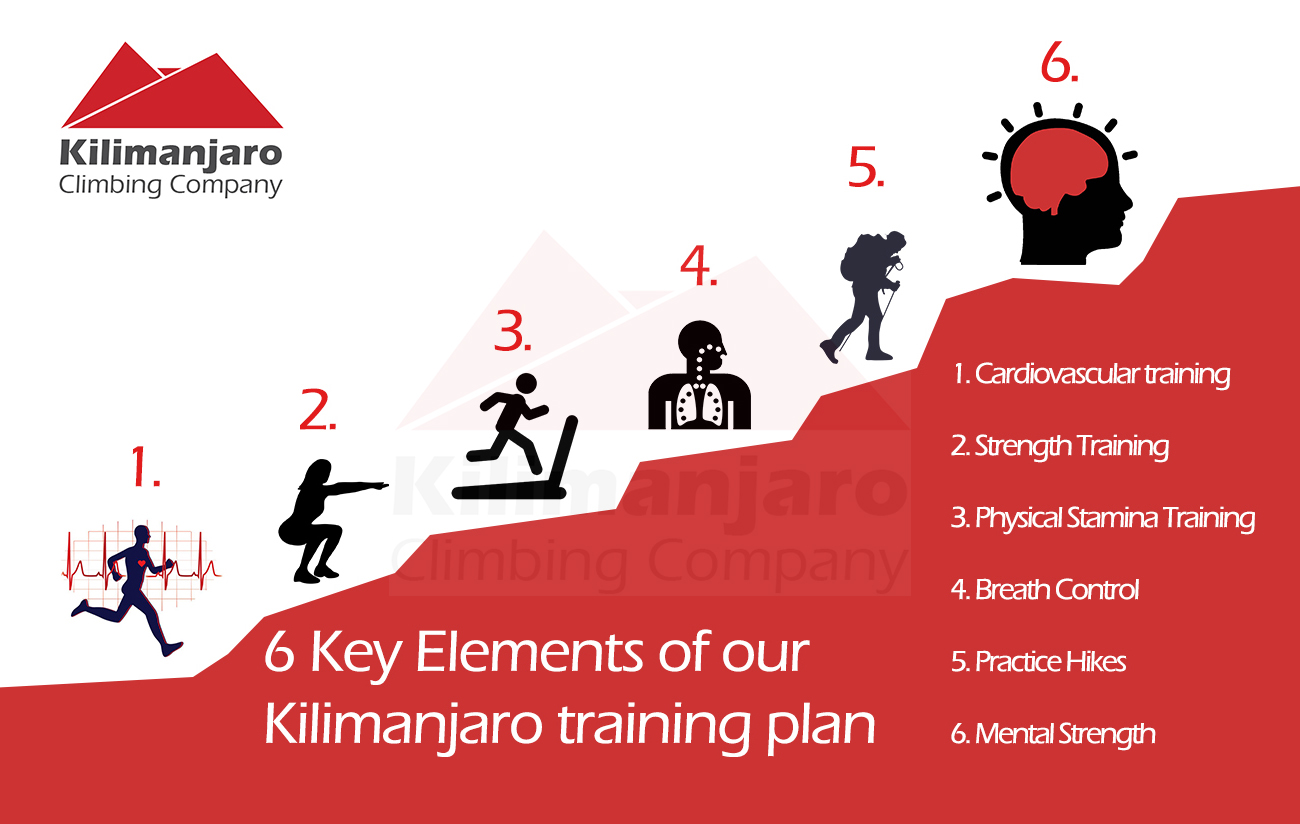
Essential Physical Training for Climbing Kilimanjaro
Cardiovascular exercises are crucial when training for Kilimanjaro. They enhance your stamina, allowing you to hike longer distances without getting tired. Activities like running, cycling, and swimming can significantly improve your cardio fitness. Aim for at least 30 minutes of such activities, five times a week. Consistency is the key here.
Strength training is another essential part of your preparation. It builds the muscles needed for the climb and helps prevent injuries. Focus on both your lower and upper body. Exercises like squats, lunges, and push-ups are excellent choices. Incorporating weightlifting can also enhance muscle strength.
Hiking is the best way to simulate the conditions you’ll face on Kilimanjaro. Try to hike on hilly terrains with a backpack that gradually increases in weight. It helps your body adjust to carrying gear and walking on uneven surfaces. Aim for at least one long hike every week. This not only builds your physical endurance but also boosts your confidence.
Finally, don’t forget to work on flexibility and balance. Yoga and stretching exercises can improve your range of motion and help avoid stiffness. Balance training ensures you can handle tricky paths safely. Incorporate these workouts into your routine a few times a week. They might seem minor but are incredibly beneficial.
How to Train for Climbing Kilimanjaro (The Best Way)
Cardiovascular Exercises to Boost Stamina
Building stamina is crucial for climbing challenges like Kilimanjaro. Cardiovascular exercises are excellent for enhancing endurance. Running is a popular choice and can be done almost anywhere. Start with shorter distances and gradually increase your miles. Don’t forget to vary your speed for more effective results.
Cycling is another great cardio workout. It strengthens your legs and improves heart health. Whether on a stationary bike or riding outdoors, it’s beneficial. Include a mix of flat roads and hills to mimic mountain conditions. Aim for at least 30 minutes a few times each week.
Swimming offers a full-body workout and is easy on joints. It enhances lung capacity, which is helpful at high altitudes. Try alternating between different strokes, like freestyle and backstroke, to make it more dynamic. Swimming also reduces the risk of injury, which is a bonus. Why not hit the pool when you can?
Incorporate circuit training to keep things exciting and effective. Include various moves such as jumping jacks, burpees, and high knees. These exercises not only boost stamina but also improve coordination. Structuring them in a circuit keeps your heart rate up. Try doing circuits twice a week to build a strong aerobic base.
Strength Training for Lower and Upper Body
Strength training is vital for tackling Kilimanjaro’s rugged terrain. Focus first on your lower body, as your legs will do most of the work. Squats are excellent for building leg muscles. Try variations like goblet squats and split squats for added difficulty. Lunges are also effective, targeting your quads, hamstrings, and glutes.
For your upper body, exercises like push-ups and pull-ups should be included. These moves build arm, shoulder, and chest strength. They are essential for handling your backpack and maintaining good posture. Consider adding dumbbell exercises like shoulder presses and bicep curls. A strong upper body reduces fatigue during your climb.
Core strength is equally important for stabilization. Planks are a simple yet effective exercise for this. Hold the plank position for as long as you can, gradually increasing the time. Russian twists help work on your obliques and improve balance. Strengthening your core helps prevent back pain and supports overall endurance.
Mix these exercises into a balanced workout plan. Aim to train each muscle group at least twice a week. Use a mix of bodyweight and weighted exercises for the best results. Rest days are also crucial for muscle recovery. Keeping a workout journal can help you track progress and stay motivated.
Hiking to Simulate Actual Climbing Conditions
Hiking is one of the best ways to prepare for climbing Kilimanjaro. It allows you to experience similar physical demands and terrains. Start with trails near your home and progressively choose more challenging paths. Incorporate both flat and steep terrains to get a feel for different types of grounds. Hiking frequently helps build your leg muscles and endurance effectively.
Carrying a weighted backpack during hikes can be beneficial. Start with a light pack and gradually increase the weight. This helps you get used to carrying the gear you’ll need on the climb. Make sure to practice proper posture to avoid straining your back. Having the right gear can make a big difference in your comfort and performance.
Consistent hiking also helps improve your balance and coordination. Rough and uneven terrains often require quick adjustments. Navigating these conditions enhances your agility and mental focus. Try to hike on varied surfaces to challenge your reflexes. These skills are crucial when you’re tackling Kilimanjaro’s unpredictable paths.
Plan hikes that mimic the daily climbing routine you’ll experience. Consider back-to-back hikes to simulate consecutive days of climbing. This helps your body adjust to limited recovery time. It’s important to monitor how your body reacts and make necessary changes. Building up to longer hikes helps ensure you’re physically ready for the summit push.
Don’t forget to take proper rest between hiking sessions. Overtraining can lead to fatigue and possible injuries. Rest days allow your muscles to repair and grow stronger. Make your recovery time active by doing light stretching or yoga. Listening to your body is key during your preparation phase.
Altitude Training to Acclimate Your Body
Altitude training is essential for preparing your body to climb Kilimanjaro. When you ascend to higher altitudes, the air becomes thinner. This makes it harder for your lungs to get the oxygen they need. Preparing your body to handle these conditions can improve your chances of reaching the summit. Specialized altitude training helps increase your red blood cell count, which carries oxygen throughout your body.
Using an altitude mask during workouts is one way to simulate high-altitude conditions. These masks reduce the oxygen flow, mimicking what you’d experience on Kilimanjaro. While they might make you breathe harder, they help condition your body. Remember to use them sparingly to avoid overstraining. Start with short intervals to allow your body to adapt gradually.
Another option includes visiting altitude rooms or facilities that simulate high-altitude environments. These spaces offer a controlled setting to safely practice acclimation. Regular sessions can help your body gradually adapt to lower oxygen levels. These facilities often guide you through safe and effective exercises. Combining this with your regular training can enhance your overall preparation.
Consider taking short trips to higher altitudes before your climb. Spending weekends hiking in nearby mountains can give you practical experience. This not only helps your body adjust but also improves your confidence. Make sure you ascend slowly to allow proper acclimatization. Stay hydrated and listen to your body to prevent altitude sickness.
It’s also important to pay attention to your diet and hydration while acclimating. Eating a balanced diet rich in iron can boost red blood cell production. Staying hydrated helps your body cope with altitude changes. Remember to get plenty of rest between training sessions. Adequate recovery is crucial for effective altitude acclimatization.
Flexibility and Balance Workouts
Flexibility and balance workouts are essential for climbers tackling Kilimanjaro. These workouts help reduce the risk of injury and improve overall performance. Stretching exercises are fundamental. Try dynamic stretches like leg swings and arm circles before your training sessions. Finish with static stretches to cool down and improve flexibility over time.
Yoga is excellent for developing both flexibility and balance. Practicing yoga a few times a week can tremendously enhance your range of motion. Postures like the Warrior pose and Tree pose are particularly beneficial. Yoga also helps build core strength, which supports balance. Plus, the breathing techniques can aid in managing stress during the actual climb.
Balance exercises are just as crucial as flexibility. Standing on one leg is a simple yet effective starting point. Progress to more challenging moves like the single-leg deadlift. These exercises strengthen stabilizing muscles in your feet and legs. Improved balance is vital for navigating Kilimanjaro’s uneven terrain.
Incorporate stability tools like balance boards or Bosu balls in your workouts. These tools make traditional exercises like squats and push-ups more challenging. This results in better coordination and strengthened stabilizer muscles. Using these tools mimics the instability of mountain paths. Regular practice on them will enhance your agility and reflexes.
A well-rounded routine should mix flexibility exercises with balance training. Plan to spend at least 10-15 minutes on these workouts every day. Consistency is key to seeing improvements. Track your progress with a workout journal. This will help you stay motivated and adjust your routine as needed.
Nutritional Guidelines to Support Your Training Regimen
Maintaining proper nutrition is key when training for a climb like Kilimanjaro. A balanced diet fuels your body and aids in recovery. Focus on consuming a mix of carbohydrates, proteins, and healthy fats. Carbohydrates provide the energy needed for intense workouts. Choose complex carbs like whole grains and vegetables over simple sugars.
Proteins are essential for muscle repair and growth. Include lean sources such as chicken, fish, beans, and legumes in your meals. After a workout, a protein shake can help kickstart the recovery process. Ensure you’re getting sufficient protein throughout the day. This maintains muscle mass and strength during training.
Healthy fats play an important role in long-term energy supply and cell function. Avocados, nuts, seeds, and olive oil are rich in beneficial fats. Incorporating these into your diet supports overall health. They also assist in the absorption of vitamins that are necessary for peak performance.
Staying hydrated is vital during your training regimen. Water regulates body temperature and lubricates joints, making workouts more efficient. Aim to drink at least 8-10 glasses of water each day. For intense sessions or longer hikes, consider sports drinks with electrolytes to maintain balance.
Vitamins and minerals shouldn’t be overlooked either. Iron is crucial for oxygen transport in the blood; include foods like spinach and red meat to boost iron intake. Vitamin C from fruits helps with iron absorption and immune function. Don’t forget calcium for bone health through dairy products or fortified alternatives.
Plan your meals around your training schedule for optimal benefits. Eat a small meal rich in carbs before working out for quick energy boosts. Post-workout meals should focus on proteins to aid recovery. Keeping snacks handy can provide energy between meals without resorting to unhealthy options.
Mental Preparation Strategies for the Climb
Mental preparation is as crucial as physical training for climbing Kilimanjaro. One useful strategy is visualization. Picture yourself successfully reaching the summit, feeling strong and confident. This mental imagery can boost your motivation. It helps you stay focused on your goal during challenging moments.
Setting realistic goals is another key aspect. Break down your climb into smaller, manageable stages. Celebrate reaching each milestone, no matter how small. This approach helps prevent feeling overwhelmed. It also makes the entire journey seem more achievable.
Practicing mindfulness and meditation can significantly improve your mental endurance. Spending a few minutes each day focusing on your breath can calm your mind. This practice reduces stress and anxiety. It also teaches you to stay present, which is valuable during the climb. Mindfulness helps you enjoy the experience rather than worrying about the end result.
Building mental resilience through positive self-talk is also vital. Replace negative thoughts with encouraging ones. Remind yourself of your strengths and accomplishments. Keeping a journal where you note down positive affirmations can be helpful. This habit prepares you to handle setbacks more effectively.
Finally, lean on a support system of family and friends. Share your training progress and challenges with them. Their encouragement and advice can boost your morale. Sometimes, knowing that others believe in you makes a big difference. Their support can be a powerful tool in your mental preparation arsenal.
Recommended Gear and Clothing for a Successful Ascent
Proper gear is essential for a successful Kilimanjaro ascent. Start with a sturdy pair of hiking boots. These boots provide support and grip on rocky or uneven trails. They should be well broken-in to prevent blisters. Consider waterproof options to keep your feet dry in wet conditions.
Layering your clothing is crucial to manage varying temperatures. Begin with a moisture-wicking base layer to keep sweat off your skin. Add a warm, insulating mid-layer, like a fleece or down jacket. Finish with a waterproof and windproof outer layer. This combination keeps you dry and warm throughout the climb.
In addition to clothing, you’ll need other essential gear. A comfortable backpack with a rain cover is a must. Make sure it fits well and has enough space for essentials like food and water. Trekking poles can provide extra stability on steep sections. They also reduce impact on your joints, making the climb easier.
Don’t overlook the importance of headgear and gloves. A warm hat helps retain body heat, especially at higher altitudes. Sunglasses and sunscreen protect you from strong UV rays at elevation. Pack gloves that offer warmth without sacrificing dexterity. This ensures you can handle your gear effortlessly.
Finally, remember to bring a reliable sleeping bag and headlamp. Nights can be cold on the mountain, so choose a sleeping bag rated for low temperatures. A headlamp is helpful for early starts or night treks. It leaves your hands free to focus on the climb. Being well-prepared enhances your safety and enjoyment.
Safety Tips and Health Advisories for High-Altitude Climbing
High-altitude climbing, like tackling Kilimanjaro, requires special attention to safety. One of the biggest concerns is altitude sickness. Symptoms include headaches, dizziness, and nausea. To minimize risks, ascend slowly and give your body time to adjust. Always listen to your body and descend if symptoms worsen.
Hydration plays a crucial role in maintaining your health at altitude. The air at higher elevations is drier, so you lose more fluids through breathing. Make sure to drink water regularly, even if you’re not thirsty. Electrolyte drinks can help replace lost minerals. Keeping hydrated aids in preventing altitude sickness.
A balanced diet is equally important when climbing. Include plenty of carbohydrates for energy. They help your body cope with the physical demands of climbing. Snacks like nuts and energy bars are convenient. Eating regularly maintains your energy levels throughout the day.
Protecting yourself from the elements is essential. Wear appropriate clothing layers to regulate your temperature. Sunscreen and sunglasses are important due to increased UV exposure at higher altitudes. Wind, cold, and sun can be harsh on exposed skin. Packing a small first aid kit with essentials like band-aids and pain relief can be useful.
Staying aware of your surroundings and weather conditions is vital. Be prepared to modify plans based on changing conditions. Discuss health concerns with your guide and group before setting out. Always inform someone of your planned route and expected return time. These steps can enhance the safety and success of your climb.
Key Takeaways
- Cardio workouts like running boost your stamina for Kilimanjaro’s climb.
- Strengthening legs with squats prepares you for challenging terrains.
- Weighted backpack hikes simulate real climbing conditions you’ll face.
- Yoga enhances flexibility, crucial for a safe and comfortable ascent.
- Balance exercises aid stability on rocky Kilimanjaro paths.
